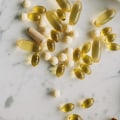Berberine iodide and acetone/berberine are more toxic against oral squamous cell carcinoma and human promyelocytic leukemia than against normal cells derived from human oral tissue. Although berberine seems to be safe and causes few side effects, a person should talk to a doctor before taking it. In addition, its wide presence in several plant species and its low toxicity suggest that berberine hydrochloride has the potential to become an effective antitumor agent in the future. While studies in humans and rodents have suggested that this could be true, scientists warn that more research is needed to confirm how berberine affects humans and whether it is safe to use.
Berberine is widely used as an antibacterial agent and is often combined with macrolides to treat gastropathy. Based on the amount of berberine present in any compound, the route of administration, and the type of organism, the LD50 value varies. Role of berberine in swine in vitro fertilization, embryo development and differential microRNA expression analysis. Different concentrations of berberine result in different cell localization patterns and cell cycle effects in a melanoma cell line.
The same analysis found that a combination of berberine and drugs to lower blood sugar is more effective than medications alone. In addition, the effect of the hormonal composition of the medium on Thalictrum minus tissue cultures has greatly influenced the production of berberine. Scientists say that berberine and metformin share many characteristics and that both could be useful in treating type 2 diabetes. Subacute concentrations of berberine lead to impaired liver function, gastric problems, liver and hematotoxicity, hemorrhagic inflammatory consequences, damage to immune cells and induced apoptosis.
Both berberine and Sanguinarine are derivatives of isoquinoline and belong to protoberberines and benzophenanthridienes, respectively. Effects of berberine on 6-hydroxydopamine-induced neurotoxicity in PC12 cells and a rat model of Parkinson's disease. Berberine promotes the development of atherosclerosis and foam cell formation by inducing expression of the sequestering receptor A in macrophages. However, on a large scale, increasing copper concentration by 10 times in the modified LS medium was reported to increase berberine production by 20% to 30% without any significant visible adverse effect on biomass production.




